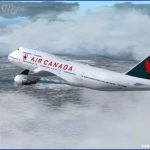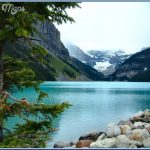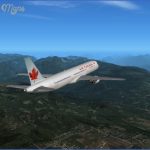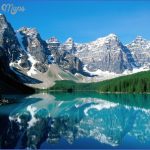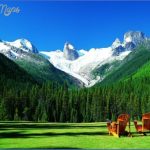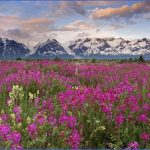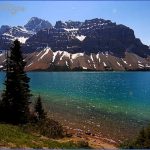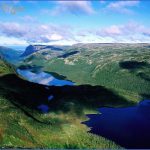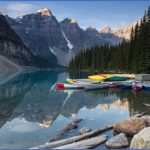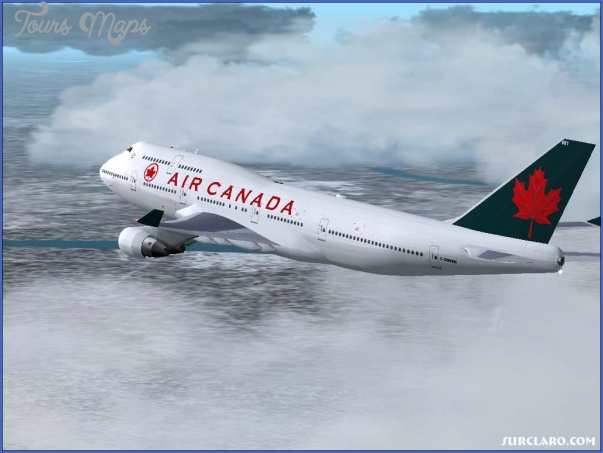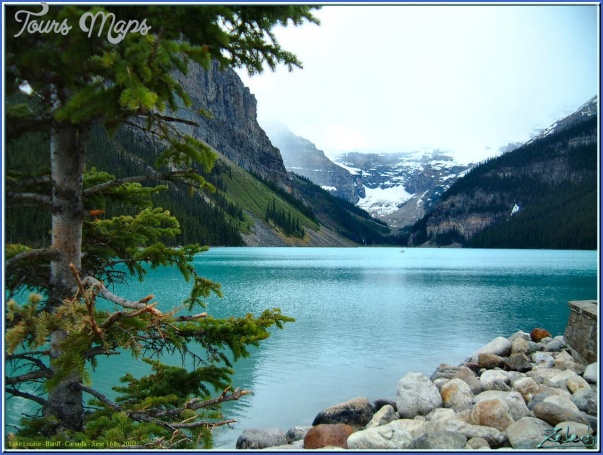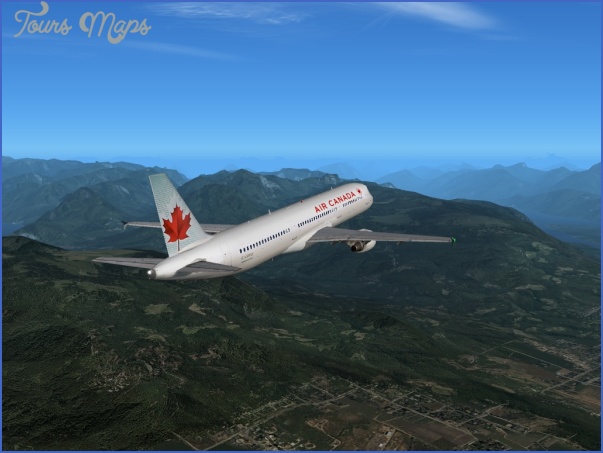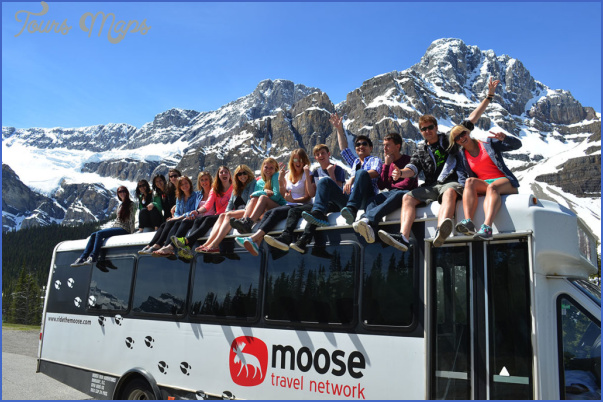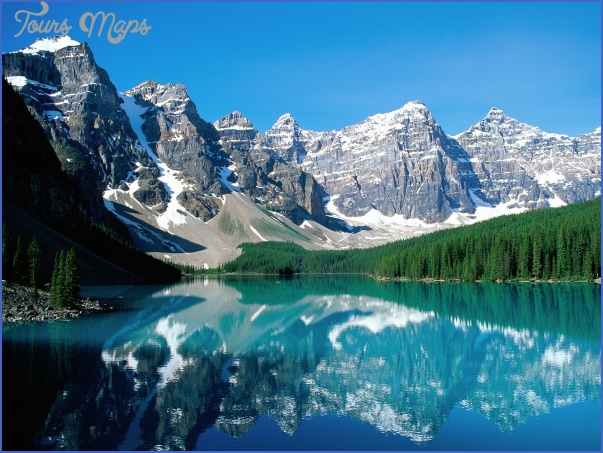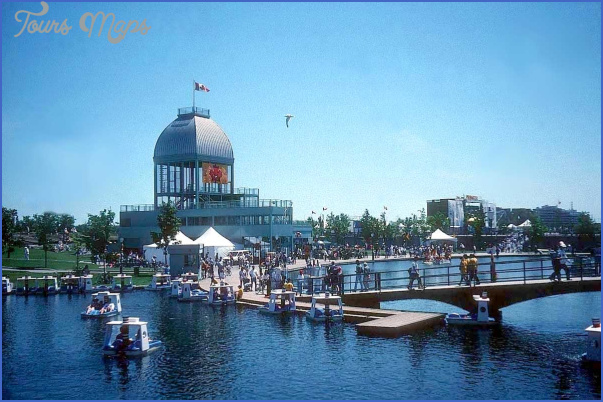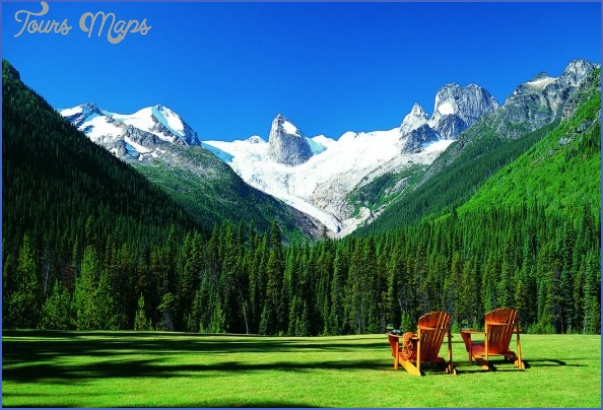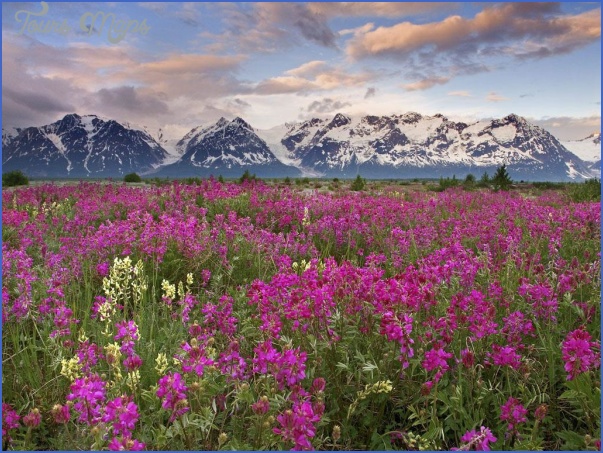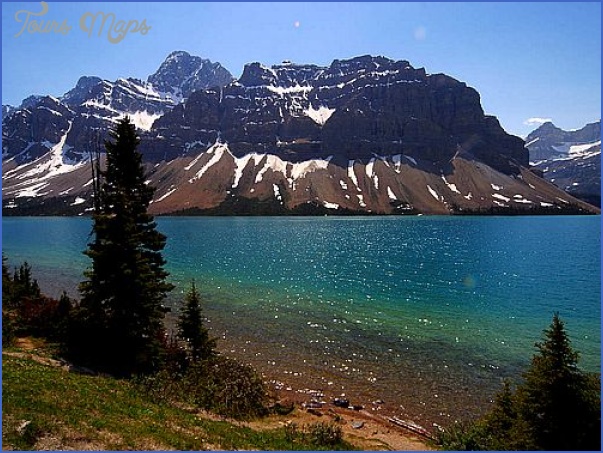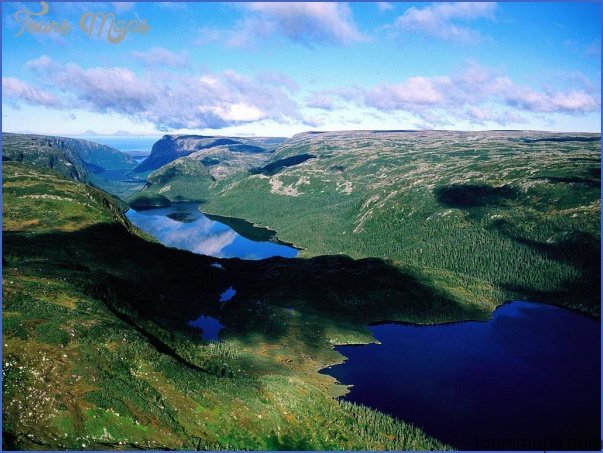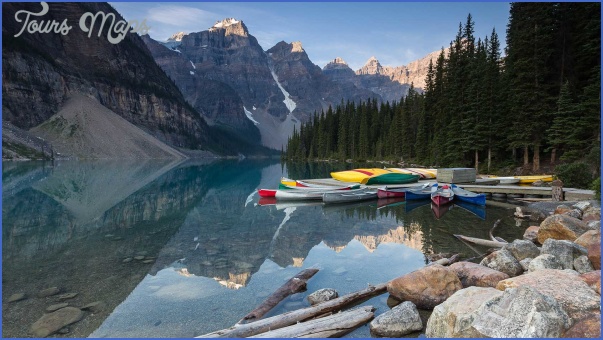Travel to Canada from the continental United States is quick and easy. Dozens of major border crossing points are provided from the United States and no visa is required. Millions of United States and Canadian residents cross the border to work, shop, vacation and do business. Travel by auto across Canada is expedited by the Trans-Canada Highway, just under five thousand miles (the world’s longest paved road), stretching from Victoria, British Columbia, on the west coast, all the way to St. John’s, Newfoundland, on the east. Ferries connect the highway with its extensions on Prince Edward Island and Newfoundland. Whitehorse, in the Yukon Territory, to Montreal is 3,627 miles. Distances between major Canadian cities are seen in the chart below. The other notable highway is the 1,524 mile Alaska Highway two-thirds of it is in Canada.
Driving the Alaska Highway is something of an accomplishment. It stretches from Dawson Creek in the south, then north through Ft. St. John and Fort Nelson, up to Alaska. In Canada mile 0 is Dawson Creek. Mile 1520 is Fairbanks, Alaska. The British Columbia/Yukon portion of the highway has an improved seal-coat surface and is paved through the major towns along the route. During rainless periods the road can be extremely dusty and driving is done with the headlights on at all times. During the spring break up it can get soggy in spots. The Alaska portion of the road is paved. Two good spare tires and a jumper cable are recommended.
Since a large portion of travel into and around Canada is by auto some pointers are in order. U.S. citizens can enter Canada without a passport or visa but should have proof of U.S. citizenship such as a driver’s license or social security card. There is no national speed limit as in the U.S.A. Speed limits vary and are posted.
U.S. car insurance offered by most companies is valid in Canada.
For best money exchange rates use the local banks. Duty exemption from U.S. customs is $400 but you must have been in Canada for at least forty-eight hours. If the stay is less, the exemption per person reduces to $25. The $400 exemption is available only once every thirty days. Use Canadian stamps if mailing anything in Canada.
Figure 2.1 gives some idea of Canada’s immensity and the fact that nearly all of the cities are within a hundred miles or so of the northern border of the U.S. The Canadian North is so sparsely settled that it has been likened to the Sahara Desert. The Northwest and Yukon Territories, which make up the bulk of the Canadian North, occupy one-and-a-half million square miles, roughly 40 percent of Canada. The population totals less than 100,000.
Travel to Canada Photo Gallery
Maybe You Like Them Too
- Rosewood Hotel Georgia Vancouver, Canada
- Where is Labrador, Canada? – Labrador, Canada Map – Labrador, Canada Map Download Free
- Where is Toronto, Canada? – Toronto, Canada Map – Toronto, Canada Map Download Free
- CANADA
- Canada Subway Map

